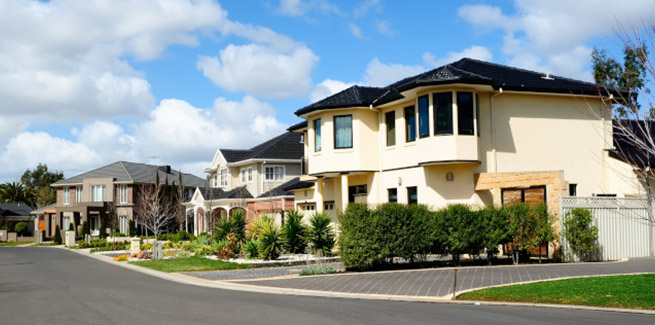Melbourne’s property market has taken a harder hit by shocks in employment in the wake of COVID-19, with more shocks expected.
Melbourne’s property markets may have been “disproportionately affected” by demand shocks and falls in employment due to the coronavirus pandemic, which may have resulted in it leading the downswing, according to CoreLogic.
In the latest Property Pulse issue, CoreLogic head of research Australia Eliza Owen has analysed why Melbourne’s property market has posted the biggest slump across capital cities in Australia.
The July CoreLogic index results have shown that Melbourne is the worst capital city performer since the onset of COVID-19. June marked the third consecutive month of value falls across the city, with dwelling values falling by 1.1 per cent.
This has seen values down by 2.3 per cent from the previous quarter, when the market hit a record high.
Ms Owen said the results may be surprising, particularly given Sydney growth rates often move quite closely with Melbourne property. However, in June this was less than half this rate in the same period, dropping 0.8 per cent.
She partly attributed the steeper decline in Melbourne to the impact the coronavirus pandemic has had on employment and migration rate.
The latest ABS payroll data has shown that Victoria has had the largest decline of payroll job positions of the state and territories as a portion of jobs at 14 March. Ms Owen said labour force conditions have had a significant impact in the current downturn, where both the cash rate target and mortgage rates are at record lows.
The most affected industries of employment have been the arts as well as food, accommodation and recreation services. In the year to February 2020, these sectors made up a fairly significant portion of the workforce in Melbourne inner region, at 11.8 per cent. Dwelling values declined by 2.9 per cent in the June quarter.
Ms Owen warned that the second spike in coronavirus across Melbourne will put additional pressure on the economy and housing market.
“Amid this unique, engineered downturn, the level of government stringency has been the key determinant of economic performance,” she said.
“The longer businesses and households are subject to social distancing, the greater the impact will be on the housing market.”
Melbourne’s housing market has also been the most exposed to demand from net overseas migration, with the city accounting for 38.2 per cent of net overseas migration to Australia.
“The highest volume of net overseas migration through 2019 was recorded across Melbourne – Inner, Melbourne South East and Melbourne West,” Ms Owen said.
“While the June quarter results show the current decline across Melbourne being led by the Inner East, which was down almost 4 per cent in the period, the shock of closed international borders may be accelerating a more broad-based decline in the region.”
However, data from the ABS and CoreLogic has shown that for many areas in Australia, high exposure to net overseas migration over 2019 is weakly negatively correlated to a decline in dwelling values between the end of March and the end of June.
The data has also shown that there are other factors dragging down property prices.
“For Mandurah, Ipswich and Inner Perth, June quarter declines in value do not appear to be related to a sudden withdrawal of high volumes of overseas migration,” Ms Owen said.
Melbourne has ‘led’ cycles
Data has suggested that the Melbourne property market has led the way in turning before the other markets.
This was evident in the most recent pick-up, where Sydney and Melbourne experienced peak growth rates around November 2019, while other capital cities continued to see a more moderate but accelerating growth rate.
Quarterly growth data of Sydney and Melbourne dwelling markets over the past 20 years has indicated that it is not uncommon for Melbourne to outstrip Sydney capital growth or to see steeper rates of decline.
“The most recent upswing before COVID-19 also saw Melbourne growth rates peak higher than in Sydney,” Ms Owen said.
“The Melbourne quarterly growth rate peaked at 6.4 per cent, compared with 6.2 per cent across Sydney. Cyclically then, it is not unreasonable to see Melbourne values slip at a greater rate than other capital cities.”
Property markets with higher incomes, more indebted households and investor activity can also be more sensitive to changes in economic conditions.
This has been evident in the upper quartile of values across the Melbourne market, which had the strongest value increases amid the last upswing, and are currently showing the largest falls.
“Given that Melbourne has also experienced higher growth rates before the onset of COVID, and may be approaching a trough more quickly, Melbourne may not be the ‘worst performer’ over the entire cycle, but just based on a snapshot view of the past couple of months,” Ms Owen said.
“However, there are some key structural factors creating added downward pressure on Melbourne property prices.”
[Related: COVID-induced job losses ‘less likely’ to hit borrowers]
 ;
;
